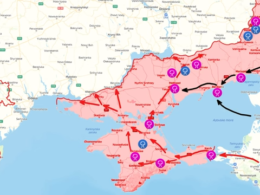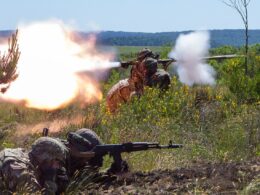First of all, more information has become available about the recent sabotage outbreak within the territory of the Russian Federation.

Recently released satellite footage has provided further insight into the drone attack on the Russian Tu-22m3 strategic bombers in the Novgorod region. The imagery reveals a distinct black trace characteristic of a fire precisely where the bombers were located just days ago.


It’s evident that the Russians promptly evacuated their bombers to alternate airfields due to the failure of the Russian Federal Security Service to apprehend the saboteurs. This suggests that the saboteurs might still be active in the region and capable of causing more destruction.
Ukrainian Intelligence has also revealed additional information about the strikes. They claim that over the last three days, Ukrainians have destroyed five Russian aircraft, including the bombers that were launching missiles at Ukrainian cities.
Turning to the frontlines, significant developments arise from the Orikhiv direction. In my previous update, I mentioned that after securing their flanks, Ukrainians executed a robust assault from the north, successfully entering Robotyne. However, the battle was far from over, as the Russians steadfastly clung to the southern part of the village.

Ukrainian forces responded by intensifying pressure and creating unfavorable conditions for the Russians. Leveraging their advantage in Western equipment, particularly night vision technology, Ukrainians conducted most of their operations under the cover of night.

Although some Russian equipment and units possess night vision capabilities, these resources remain relatively scarce, allowing Ukrainian forces to dominate Russian detachments during nighttime engagements.
The fighters from the 47th Brigade predominantly utilized Bradleys for their night operations. These assault units were rapidly transported to the frontline, after which infantry spread out and launched flanking assaults on the village. Employing smokescreens regularly, Ukrainians effectively complicated detection even for Russian units equipped with the necessary technology. This tactical approach yielded significant success, enabling Ukrainians to dislodge Russian forces from the village’s outer perimeter swiftly.

Subsequently, Russian sources released footage confirming the presence of Ukrainians not only in the central part of the village but also in clearing operations, solidifying Ukrainian control over most of the village.

Ukrainian fighters also shared videos depicting the meticulous process of house-to-house clearing operations, ensuring comprehensive control.

At times, the Ukrainian infantry encountered challenges when attempting to clear certain Russian positions, particularly isolated houses that necessitated traversing open spaces for clearance.
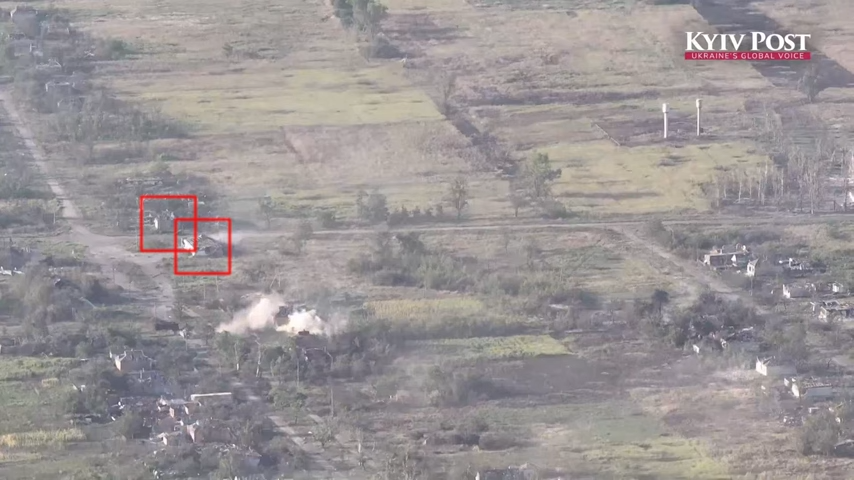
In such instances, Ukrainians enlisted support from mechanized units, swiftly entering Robotyne and employing machine guns to target primary and secondary Russian fortifications. The sector was cleared in a matter of minutes, and defensive smoke grenades from the Bradleys concealed their exit from the village before Russian artillery could respond.
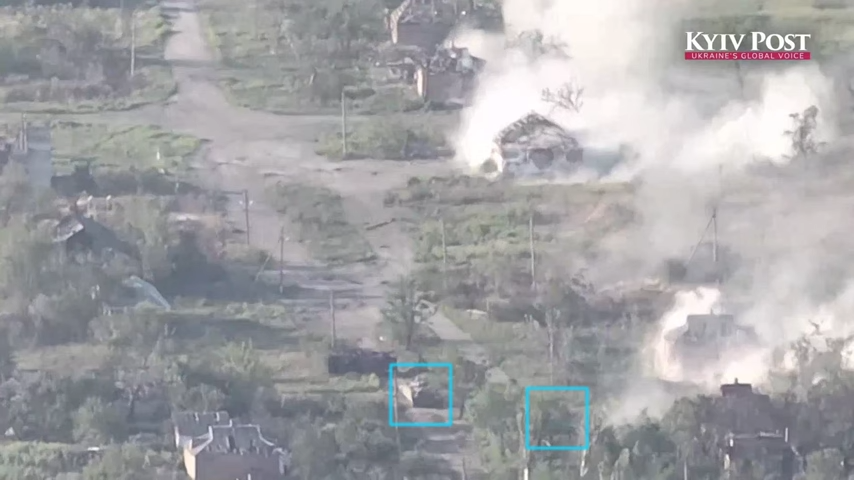
In due course, Russian forces’ control over the village waned even further, compelling remaining units to relinquish the southern part of the village.

Nevertheless, Russian sources reported a back-and-forth struggle, asserting that the village remained predominantly within the grey zone due to relentless Russian artillery barrages preventing Ukrainian access to the southern portion.
This assessment holds some truth, as Ukrainian forces faced difficulties in clearing the southern area due to continuous shelling. The rationale behind the sustained intensity of Russian shelling is straightforward – they were preparing for a counterattack and sought to eliminate obstacles for a successful re-entry into the village.

The ensuing counterattack hinged on deploying Russia’s premier tanks, the T-90M. This forceful counteroffensive momentarily allowed Russian forces to breach the northern perimeter of the village. Nonetheless, Ukrainian reinforcements arrived promptly, halting the Russian advance. This timely support proved critical, as certain groups of Ukrainian fighters had become isolated and immobilized under enemy fire. A Bradley, shielded by a tank, moved into the area and repelled the Russian infantry’s assault.
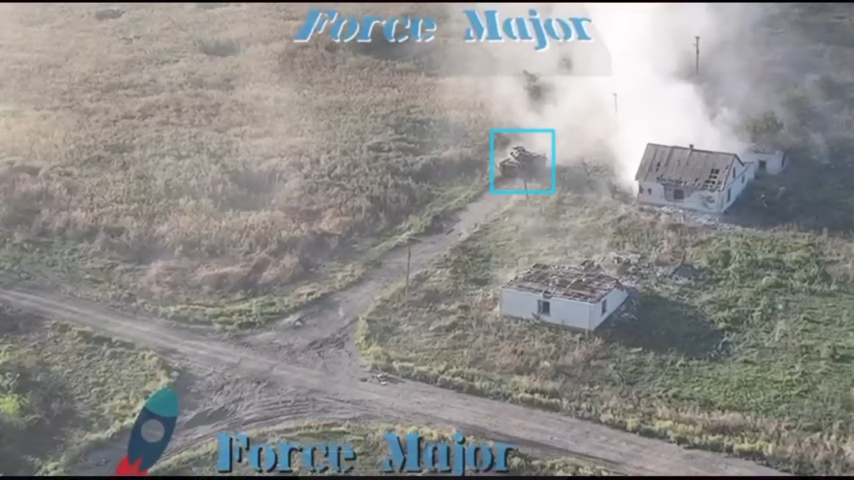
Russian sources also recounted instances of Ukrainian aviation activities in Robotyne’s vicinity, underscoring the determination of Ukrainians to secure their newly acquired positions.

Subsequently, select Russian sources released footage depicting a Russian drone ostensibly destroying a tank in the village’s central area.
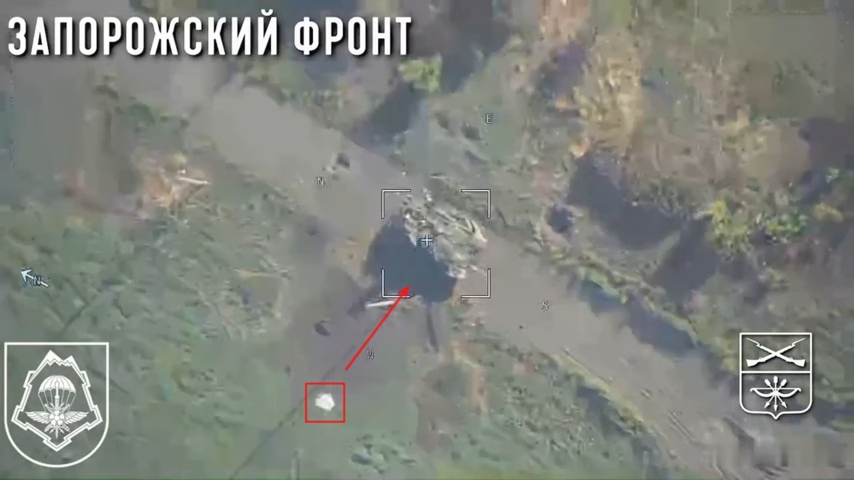
However, investigations revealed that the targeted tank was, in fact, an abandoned Russian T-90M tank. As the Russian counterattack was thoroughly repulsed and hopes of recapturing Robotyne dwindled, Russian forces recognized the futility of evacuating their tanks. To prevent the tanks from falling into Ukrainian hands, the Russians opted to destroy them.
Certain Russian sources speculated that the tank had likely sustained initial damage from an anti-tank guided missile, given the presence of numerous Bradleys in the region.
In summation, Ukrainians successfully breached Russian defenses, extending their control deeper into the liberated territory despite facing a formidable Russian counterattack. Overall, their advance extended by up to 8 km in this direction. Ukrainian drone operators flying above Robotyne reported visual confirmation of the nearby Tokmak.

By implementing strategic tactics, leveraging advanced equipment, and timely reinforcements, Ukrainians have demonstrated resilience and capability on the battlefield.
In our daily frontline report, we pair up with the military blogger Reporting from Ukraine to keep you informed about what is happening on the battlefield in the Russo-Ukrainian war.



